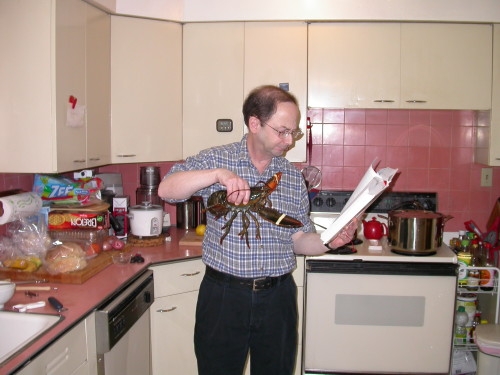I’m often disappointed by recipes I find in newer cookbooks and online. It’s as if nobody proofread or tested them. Sometimes ingredients in the list don’t appear in the recipe instructions, or proportions seem to be off. For those of us in science, a key consideration in publishing our research is to describe methods in sufficient detail that someone can replicate what we did. In the interest of advancing quality control, this is my take on recipe-writing.
To paraphrase Albert Einstein, the divine is in the details. Spell it all out. Never assume that your readers are experts in the kitchen. What kind of onions? How much in terms of measurement? How long does it need to cook? What should the texture or color of the final product be? If you include some less common ingredients, where can your reader find them?
As an example, here is a recipe I copied verbatim from a notebook of recipes that my maternal grandmother compiled. Grandma was a home economics teacher before she got married, so she kept many of her methods and proportions in her brain. She died just before my fifth birthday, so I never had a chance to learn from her.
Swiss Steak (this looks more like pot roast to me, but I’ll give Grandma the benefit of the doubt)
Round steak and onions.
Fry onions until brown, pull well to one side of pan and sear the steak in browned grease. (Roll steak if desired.) When steak is well browned on both sides, fill pan 2/3 full of water, cover, and let simmer on back of stove for two or three hours, watching to see if more water is needed. Remove steak and make a thickened gravy, which may be strained if desired.
Grandma needed to fill in some blanks for the benefit of her descendents. For example:
- How much round steak and onions?
- How should the onions be cut?
- What “grease” should be used to fry the onions?
- No seasoning? Not even salt and pepper? (Grandpa would have liked some salt…)
- How do you thicken it? Boil the daylights out of it?
Here is my attempt at rewriting her recipe. I took a few liberties to drag it into the 21st Century.
Pot Roast
2 pounds top or bottom round steak, in one piece
2 large yellow onions, peeled, halved lengthwise, and cut into half-moon slices (about 2 cups)
1 tablespoon olive oil, vegetable oil, or bacon grease (what Grandma might have used)
1 sprig flat leaf (or Italian) parsley, 1 branch fresh thyme, and 1 bay leaf, tied together with kitchen string
kosher salt and freshly-ground black pepper to taste
2 cups low-sodium beef or vegetable broth
water as needed
1 tablespoon flour, stirred into 2 tablespoons water to form a slurry (optional)
Season the steak on both sides with salt and pepper. Heat oil or bacon grease in a large heavy skillet that will hold the beef snugly over medium-low heat. Add onions to pan and cook slowly until they begin to turn golden brown, between 15 and 25 minutes. Don’t burn the onions. Stir occasionally to brown them evenly. Remove onions from pan with a slotted spoon and turn heat to medium high. Put round steak in pan and cook for about 5 minutes on each side until well-browned. Return browned onions to pan and add broth and herb bundle. Make sure the liquid is about 2/3 up the side of the pan. Bring to boil; turn heat down to low and simmer for about 2 hours until meat is fork-tender. Add more water as needed. At the end of cooking, remove the beef and onions, if desired. Thicken the broth in the pan with the flour and water slurry, stirring constantly, until liquid reaches a boil. Let boil 3-5 minutes to cook away the raw flour taste, then serve as a gravy with the beef and onions. Serves 6-8.



Recent Comments